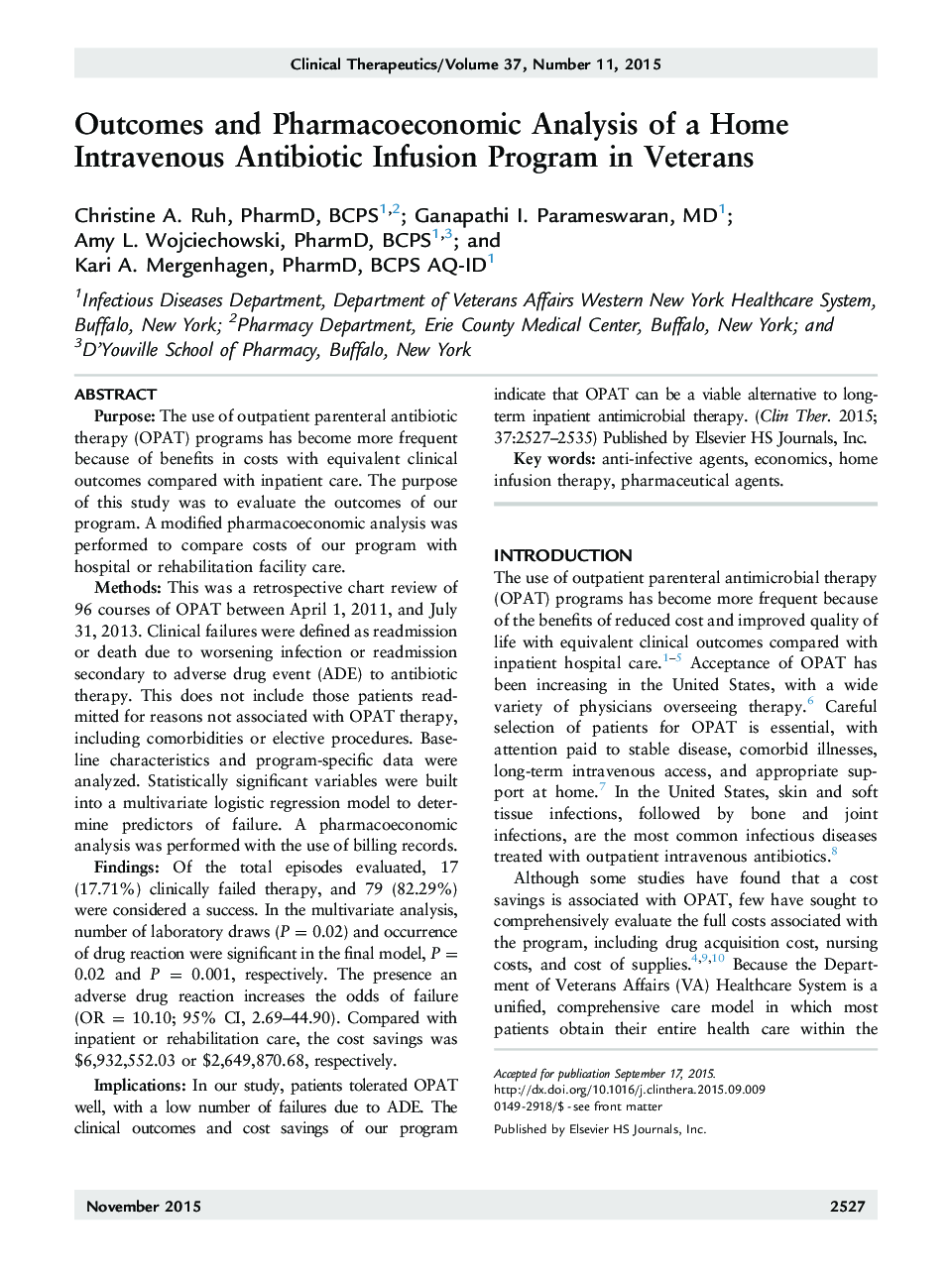| Article ID | Journal | Published Year | Pages | File Type |
|---|---|---|---|---|
| 5824808 | Clinical Therapeutics | 2015 | 9 Pages |
PurposeThe use of outpatient parenteral antibiotic therapy (OPAT) programs has become more frequent because of benefits in costs with equivalent clinical outcomes compared with inpatient care. The purpose of this study was to evaluate the outcomes of our program. A modified pharmacoeconomic analysis was performed to compare costs of our program with hospital or rehabilitation facility care.MethodsThis was a retrospective chart review of 96 courses of OPAT between April 1, 2011, and July 31, 2013. Clinical failures were defined as readmission or death due to worsening infection or readmission secondary to adverse drug event (ADE) to antibiotic therapy. This does not include those patients readmitted for reasons not associated with OPAT therapy, including comorbidities or elective procedures. Baseline characteristics and program-specific data were analyzed. Statistically significant variables were built into a multivariate logistic regression model to determine predictors of failure. A pharmacoeconomic analysis was performed with the use of billing records.FindingsOf the total episodes evaluated, 17 (17.71%) clinically failed therapy, and 79 (82.29%) were considered a success. In the multivariate analysis, number of laboratory draws (P = 0.02) and occurrence of drug reaction were significant in the final model, P = 0.02 and P = 0.001, respectively. The presence an adverse drug reaction increases the odds of failure (OR = 10.10; 95% CI, 2.69-44.90). Compared with inpatient or rehabilitation care, the cost savings was $6,932,552.03 or $2,649,870.68, respectively.ImplicationsIn our study, patients tolerated OPAT well, with a low number of failures due to ADE. The clinical outcomes and cost savings of our program indicate that OPAT can be a viable alternative to long-term inpatient antimicrobial therapy.
